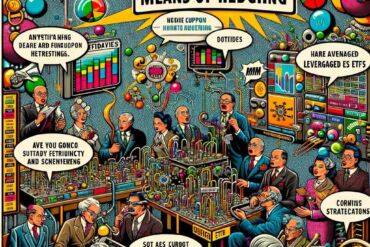In the annals of economic history, few episodes are as puzzling, consequential, and cautionary as Japan’s “Lost Decade.” Spanning the 1990s and even stretching into the early 2000s, this period is a stark reminder of the fragility of economic prosperity and the profound impact of financial bubbles on a nation’s social and economic fabric. It stands as a testament to how a combination of market forces, regulatory lapses, and systemic failures can lead an economic powerhouse into a prolonged period of stagnation.

Brief Overview of the Lost Decade
Japan’s economic ascent after World War II was nothing short of miraculous. By the 1980s, the nation had emerged as the second-largest economy in the world, with its businesses and technological innovations admired and emulated globally. Yet, as the 1990s dawned, the narrative took a dramatic shift. The once seemingly unstoppable Japanese economic juggernaut found itself mired in a prolonged recession, from which it struggled to emerge for over a decade.
At the core of this sudden and unexpected downturn was an immense asset price bubble, encompassing both real estate and equities. When this bubble burst at the outset of the 1990s, it set off a chain reaction. Financial institutions, laden with bad debt, became “zombie banks,” barely staying afloat and unable to lend. Businesses, hit by declining asset values and tightening credit, cut back on investments and expansion. Consumers, witnessing the evaporation of their wealth and uncertain about the future, curtailed spending. These elements combined to create a perfect economic storm, characterized by deflation, stagnation, and a palpable sense of national malaise.

Why Understanding the Japanese Housing Bubble is Important
While the stock market’s exuberance and its subsequent crash are critical aspects of the Lost Decade, it is the housing bubble — its origins, inflation, and devastating burst — that remains particularly illuminating. Housing, unlike stocks, is not just an asset class; it’s intertwined with the dreams, aspirations, and everyday lives of millions. When housing markets falter, the effects ripple through every sector of the economy, impacting individuals from every walk of life.
Delving deep into the Japanese housing bubble is essential for several reasons. Firstly, it serves as a vivid case study for policymakers, economists, and students of finance on the dangers of unchecked market exuberance, the importance of sound regulatory oversight, and the perils of delayed intervention. Japan’s experience offers lessons on how seemingly small missteps can snowball into profound economic crises.
Secondly, understanding the housing bubble provides insights into the socio-cultural implications of economic downturns. Japan’s younger generations, for instance, grew up in the shadow of the bubble’s burst, an experience that shaped their views on employment, home ownership, and financial security.
Lastly, as global economies become more interconnected, the repercussions of a major economic event in one nation can have cascading effects worldwide. Grasping the intricacies of the Japanese housing bubble arms us with knowledge, preparing us to navigate and potentially mitigate future financial crises, whether they emerge in Tokyo, New York, London, or elsewhere.
In this exploration, we shall journey through the ebbs and flows of Japan’s real estate market, unraveling the factors that inflated the bubble, the critical moments that signaled its impending burst, and the aftermath that left a lasting imprint on Japan and the world.
source: KonichiValue on YouTube
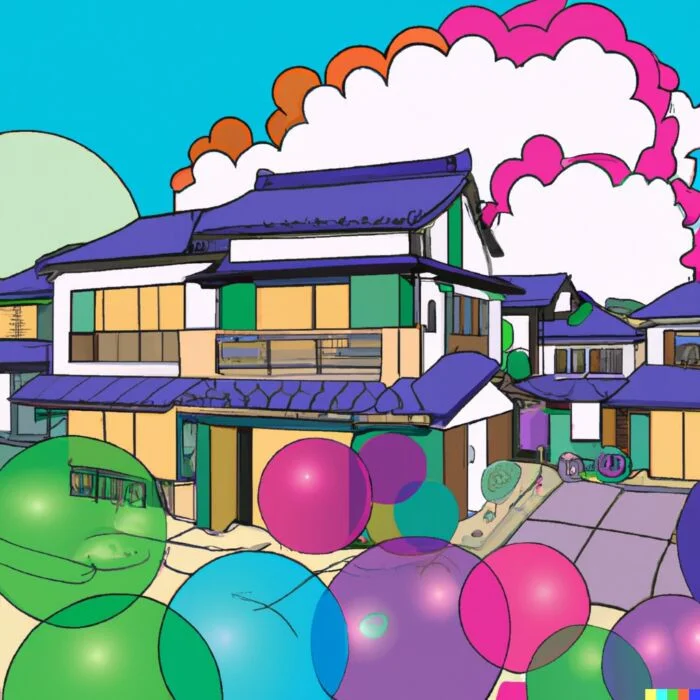
Historical Context: Japanese Housing Bubble
The story of Japan’s Lost Decade cannot be properly understood without tracing back to the roots of its economic ascent and the circumstances leading to the formation of the asset price bubble. Japan’s post-World War II trajectory and the asset price bubble of the 1980s are two significant pillars on which the narrative of the Lost Decade rests.

Japan’s Post-WWII Economic Miracle
At the end of World War II, Japan’s economic and infrastructural landscape was devastated. The destruction wrought by the atomic bombings of Hiroshima and Nagasaki, coupled with the Allied bombings of other major cities, left the nation in ruins. The immediate post-war years saw Japan grappling with food shortages, a shattered industrial base, and soaring inflation.
However, what followed was nothing short of an economic miracle. Through a combination of internal resilience, policy-driven initiatives, and external circumstances, Japan initiated a reconstruction effort that would transform it from a defeated nation to an economic powerhouse within a matter of decades.
- Land Reforms: The American occupation forces, along with the Japanese government, initiated sweeping land reforms. These aimed to dismantle the power of large landowners and distribute land to tenant farmers. As a result, a surge in agricultural productivity was observed, leading to increased rural incomes.
- Industrial Policy: The Japanese government, through institutions like the Ministry of International Trade and Industry (MITI), played a pivotal role in guiding the economy. They identified and promoted sectors deemed essential for economic growth, such as steel, chemicals, and automobiles.
- Education and Labor: Post-war Japan invested heavily in education, ensuring a skilled workforce that would fuel its industries. Additionally, a unique labor culture developed, characterized by lifelong employment, seniority-based promotions, and strong company loyalties, fostering productivity and innovation.
- External Factors: The Korean War (1950-1953) acted as a stimulus, with Japan serving as the primary supply hub for UN forces, leading to a boom in various sectors. Additionally, Japan’s accession to GATT (General Agreement on Tariffs and Trade) in 1955 allowed it to penetrate global markets with its exports.
By the 1980s, Japan was not just competing with the West; in several industries, it was outpacing it. Brands like Toyota, Sony, and Honda became household names globally. The nation’s technological advancements and manufacturing prowess were viewed with admiration and, at times, trepidation.

The Asset Price Bubble of the 1980s
With economic success came an influx of wealth and confidence. By the 1980s, buoyed by robust corporate profits, high savings rates, and easy credit, Japan’s equity and real estate markets began to soar.
- Easy Monetary Policy: The Bank of Japan, in an attempt to counteract the appreciation of the yen after the 1985 Plaza Accord and to support domestic industries, adopted a low-interest rate policy. This made borrowing cheap and encouraged speculative investments in real estate and stocks.
- Overconfidence and Speculation: Japan’s rapid ascent led to overconfidence among businesses and individuals. There was a widespread belief that land prices, especially in prime areas like Tokyo, would keep rising indefinitely. This sentiment led to frenzied buying, with corporations and individuals purchasing properties at exorbitant prices.
- Financial Liberalization: The 1980s saw the deregulation of Japan’s financial sector, making it easier for institutions and individuals to access credit. While this fueled economic activity, it also led to lax lending standards, with banks often providing loans based on the collateral value of land, which was skyrocketing.
- Echoes of Euphoria: The stock market wasn’t immune to the exuberance. The Nikkei 225, Japan’s premier stock index, reached dizzying heights. Blue-chip Japanese companies saw their stock prices inflate to levels that were detached from their actual earnings or fundamentals.
By the end of the 1980s, warning signs began to emerge. Analysts and economists sounded alarms about the unsustainable nature of asset prices. But the bubble, driven by a mix of euphoria and institutional inertia, continued to inflate until its inevitable burst.
In hindsight, Japan’s post-WWII economic miracle sowed the seeds of its subsequent financial crisis. The very factors that propelled Japan to global prominence—its industrial policy, corporate culture, and financial practices—played roles in creating an environment ripe for an asset bubble. The consequences of this bubble, and its burst, would shape Japan’s economic trajectory for decades to come.
source: Money & Macro on YouTube

The Rise of the Japanese Housing Bubble
Japan’s housing bubble of the 1980s remains one of the most dramatic instances of property market exuberance in modern economic history. As property prices soared, a square meter of prime land in Tokyo’s Ginza district became worth more than an entire luxury apartment in Manhattan. How did this meteoric rise come about? Understanding the confluence of factors that birthed and nurtured the housing bubble provides a multifaceted view of Japan’s economic milieu during this period.

Key Factors Contributing to the Housing Bubble
Low-Interest Rates:
- Policy Background: Following the Plaza Accord in 1985, which aimed to depreciate the US dollar against the yen and other major currencies, the Japanese yen appreciated sharply. To combat the resultant pressure on Japanese exporters, the Bank of Japan (BoJ) adopted an easy monetary policy, slashing interest rates.
- Effect on Property Market: Lower interest rates made borrowing cheaper for everyone—from corporate giants to ordinary citizens. This influx of easy money found its way into the real estate market. As more people could afford to take out larger loans, demand for property increased, driving up prices.
- Feedback Loop: The rising property values reinforced confidence in the market. Since land was perceived as a safe and appreciating asset, many individuals and businesses borrowed money to invest in real estate, further fueling the demand and price rise.
Speculative Investments:
- Economic Optimism: Japan’s consistent economic successes in the decades leading up to the 1980s created an atmosphere of invincibility. Many believed the trajectory of property prices would always be upward, leading to speculative buying.
- Land as a Preferred Asset: Cultural and historical factors made land an especially attractive asset in Japan. The limited availability of land on the Japanese archipelago coupled with its cultural significance amplified its perceived value.
- Corporate Speculation: Japanese corporations, flush with profits, engaged in speculative land purchases not just for business expansion but as a store of value. Additionally, as land prices rose, it enhanced the value of collateral, allowing firms to borrow even more.
Lax Banking Regulations:
- Deregulation: The 1980s saw deregulation in the Japanese financial sector, allowing a wider range of institutions to provide loans, intensifying competition among banks.
- Riskier Lending: In the face of competition and the lure of the booming property market, banks began to relax their lending standards. Often, loans were extended based on the rising value of land as collateral rather than the borrower’s ability to repay.
- Zaitech: Some Japanese corporations indulged in financial engineering—using their stock and property portfolios to secure loans, then reinvesting the borrowed money into the stock and property markets, banking on their continued rise.

Comparisons with Other Global Housing Bubbles
The Japanese housing bubble shares similarities with other notable housing bubbles across the globe, including the US housing bubble of the mid-2000s and Spain’s property bubble of the same period:
- Easy Credit: Similar to the US and Spain, Japan’s bubble was characterized by easy access to credit, often at low interest rates.
- Speculative Fervor: The belief that property prices would always rise was a common thread across these bubbles. In the US, this belief was epitomized by the popularity of subprime mortgages.
- Banking Oversights: In all these cases, lax oversight by banking regulators, and sometimes willful blindness to emerging risks, exacerbated the situation.
- Economic Consequences: The bursting of these bubbles led to prolonged economic downturns, financial crises, and taxpayer-funded bailouts.
However, there are also distinctions. For instance, Japan’s corporate involvement in the property bubble, particularly the phenomenon of Zaitech, was more pronounced than in other housing bubbles. Moreover, cultural and geographic considerations made land an especially sought-after asset in Japan.
The rise of the Japanese housing bubble was a complex event, spurred by a mix of domestic policies, international events, economic optimism, and regulatory lapses. Its eventual burst would send shockwaves through the global economy, underscoring the perils of unchecked market exuberance.
source: Insight on YouTube

The Peak and the Inevitable Burst Of The Bubble In Japan
Every financial bubble, regardless of its size and scale, follows a similar trajectory: a steep ascent characterized by rampant speculation and irrational exuberance, a peak where warning signs become increasingly evident, and an eventual, often dramatic, burst. The Japanese housing bubble was no exception, and its bursting had profound ramifications for Japan and the global economy.

Signs of an Overheated Market
- Astronomical Valuations: By the late 1980s, real estate prices in urban centers like Tokyo and Osaka reached dizzying heights. Some estimates suggested that, at its peak, the combined value of Tokyo’s real estate exceeded that of the entire United States. Such valuations were clearly out of sync with real-world economic fundamentals.
- Easy Loan Approvals: The boom saw a loosening of credit standards. Banks and financial institutions were approving loans with minimal due diligence, basing decisions primarily on the skyrocketing value of collateral.
- Speculation Over Fundamentals: Investment decisions were increasingly made based on the expectation of future price increases rather than underlying economic fundamentals. This speculative mentality was pervasive, extending beyond institutional investors to ordinary Japanese citizens.
- Proliferation of Luxury Goods: A conspicuous sign of any bubble, the surge in real estate prices was accompanied by a boom in luxury goods. Expensive cars, art, and overseas properties became status symbols, indicating the extent of wealth and optimism.

Key Events Leading up to the Burst
- Plaza Accord and the Surge of Yen: The 1985 Plaza Accord, an agreement among major economies to depreciate the US dollar, led to a rapid appreciation of the yen. An expensive yen made Japanese exports less competitive, putting pressure on the country’s export-driven economy. The Bank of Japan responded by slashing interest rates, spurring the domestic lending and borrowing that inflated the bubble.
- External Economic Pressures: By the late 1980s, Japan was facing increasing competition from emerging Asian economies. Countries like South Korea and Taiwan were starting to challenge Japan in sectors like electronics and automobiles, putting additional pressure on Japanese exporters.
- Overexposure of Banks: Japanese banks became heavily exposed to the real estate sector. As land prices kept increasing, the value of collateral held by banks also rose, encouraging further lending. This overexposure made the banking sector particularly vulnerable to a decline in property values.

The Day of Reckoning: When the Bubble Burst
The early 1990s marked the beginning of the end for the Japanese housing bubble.
- Tightening Monetary Policy: Recognizing the overheated nature of the property market and the potential systemic risks, the Bank of Japan began to raise interest rates in 1989. This tightening of monetary policy increased the cost of borrowing, curbing the demand for loans and, by extension, property.
- Emerging Doubts: As the new decade dawned, cracks began to appear. Doubts emerged about the sustainability of property prices, leading to decreased demand. With fewer buyers in the market, those wanting to sell properties began lowering their prices, starting a downward spiral.
- Bank Failures and Financial Crisis: As property prices declined, the value of the collateral held by banks diminished. Many borrowers, both corporations and individuals, found themselves unable to service their loans, leading to rising non-performing assets for banks. This culminated in a banking crisis, with several banks and financial institutions facing insolvency.
- Economic Stagnation: The bursting of the housing bubble had a cascading effect on the broader Japanese economy. With banks in distress, lending dried up. Businesses curtailed their investments, and consumer confidence plummeted. Japan entered a period of economic stagnation, marked by low growth, deflationary pressures, and rising unemployment. This period, characterized by a lost decade (or even two), had profound social, economic, and political implications for Japan.
While the dramatic ascent of the housing bubble was a sight to behold, its bursting was a cautionary tale. The profound impacts of the bubble’s burst underscore the importance of sound economic and regulatory practices and highlight the dangers of irrational exuberance in financial markets.
source: John Coogan on YouTube
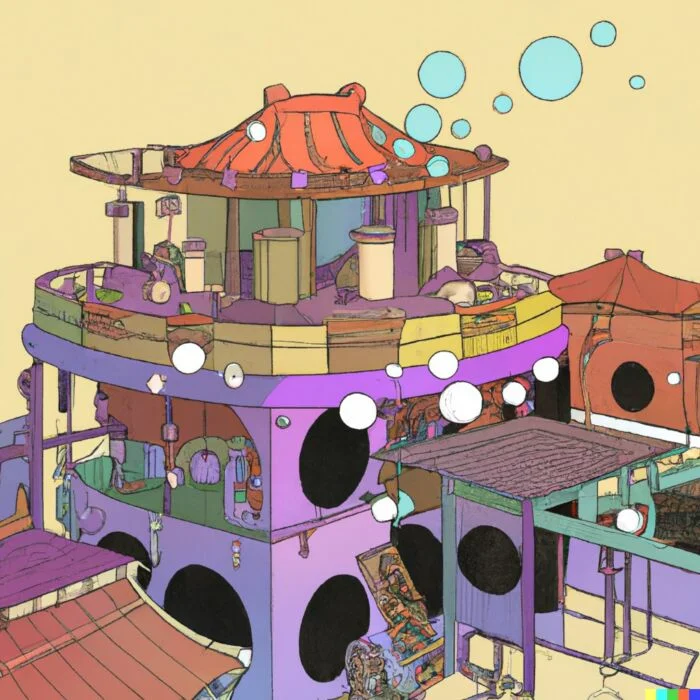
Economic Repercussions Of The Housing Bubble In Japan
The bursting of the Japanese housing bubble wasn’t simply a momentary financial jolt; it triggered a cascade of economic repercussions that persisted for decades. The country’s financial institutions bore the brunt of the collapse, but its ripples touched every corner of the economy, leading to what is often referred to as Japan’s “Lost Decade” or even “Lost Two Decades.”
Impact on Financial Institutions
- Bad Loans and Non-performing Assets: As property prices plunged, many borrowers, both corporate and individual, were left with loans that far exceeded the value of their assets. As they defaulted on their obligations, banks saw a sharp increase in bad loans and non-performing assets (NPAs). By some estimates, NPAs totaled over $1 trillion by the late 1990s.
- Bank Insolvencies: The weight of these bad loans became too much for many banks to bear. Several financial institutions, including some of the country’s largest and most prestigious banks, found themselves on the brink of insolvency. This led to a series of bank failures and consolidations throughout the 1990s and 2000s.
- Credit Crunch: With banks grappling with mounting NPAs, the overall credit availability in the economy contracted. Banks became more risk-averse, imposing stricter lending standards and curtailing their loan portfolios. This credit crunch further exacerbated the economic downturn as businesses struggled to secure financing for operations and expansion.

Banking Crisis
- Government Interventions: Recognizing the systemic risks posed by failing banks, the Japanese government intervened with bailouts, injecting capital into troubled institutions. While these measures prevented a total financial meltdown, they were often criticized for being too late or insufficient.
- Reform Efforts: In an attempt to address the root causes of the banking crisis, Japan initiated a series of banking sector reforms during the late 1990s and early 2000s. These reforms aimed to improve transparency, strengthen regulatory oversight, and streamline the banking sector through mergers and consolidations.
The Role of Zombie Banks
“Zombie banks” became a popular term to describe financial institutions that, while technically still operational, were effectively insolvent due to their overwhelming bad debts.
- Life Support: Many of these banks were kept afloat through government support or by rolling over bad loans, allowing them to maintain the facade of normalcy.
- Economic Drag: Zombie banks contributed to the economic malaise. By propping up failing businesses (often referred to as “zombie firms”), these banks prevented the natural process of creative destruction. Instead of resources being reallocated to more productive sectors of the economy, they were tied up in unprofitable ventures.
Economic Stagnation and Deflationary Pressures
- Lost Growth: Japan, once an economic powerhouse, saw its GDP growth rates dwindle. The country entered a prolonged period of economic stagnation, with minimal growth for nearly two decades.
- Deflationary Spiral: As consumer demand plummeted, businesses responded by slashing prices. This deflationary environment, where prices consistently dropped, became a defining feature of Japan’s post-bubble economy. Deflation discouraged spending (as people anticipated further price drops) and increased the real burden of debt.

Loss of Confidence Among Consumers and Businesses
- Consumer Pessimism: The bursting of the bubble and the resultant economic turmoil eroded consumer confidence. With uncertain job prospects and declining asset values, Japanese consumers curtailed spending and increased savings, further suppressing demand.
- Corporate Hesitation: Businesses, reeling from the credit crunch and a contracting domestic market, became hesitant to invest. Capital expenditures dropped, and many firms shifted focus to overseas markets, further hampering domestic economic recovery.
In sum, the economic repercussions of the bubble’s burst were deep and prolonged. Japan’s experience stands as a somber reminder of the dangers posed by unchecked financial exuberance and the profound challenges of navigating a post-bubble economy. It underscores the importance of robust financial oversight, prudent fiscal policies, and the delicate balance required to restore confidence in a shaken economy.
source: Patrick Boyle on YouTube

Japanese Government Responses and Missteps To Address The Housing Crisis
The trajectory of Japan’s “Lost Decade” was not solely the outcome of market forces; it was also shaped by policy responses, both timely and belated, as well as certain missteps by the government. Japan’s experience offers insights into the complexities of policy-making during economic crises and the challenges of striking a balance between immediate relief and long-term sustainability.
Initial Government Reactions
- Denial and Underestimation: In the initial stages of the bubble’s burst, there was a significant amount of denial among policymakers about the severity of the crisis. This complacency resulted in delayed interventions, allowing the economic situation to deteriorate further.
- Bank Bailouts: As the gravity of the banking crisis became evident, the government intervened by bailing out several key financial institutions to prevent systemic collapses. However, these interventions were often seen as ad-hoc and reactive, rather than part of a comprehensive strategy.
- Regulatory Tightening: In an attempt to stabilize the financial sector, the government introduced stricter banking regulations. While necessary, the sudden tightening further exacerbated the credit crunch, especially for small and medium enterprises.
Failed Attempts to Revive the Economy
- Public Works Spending: In the hopes of stimulating economic activity and providing employment, the government initiated a series of public works projects. While this led to the construction of infrastructure, critics argue that many projects were unnecessary “white elephants” and added significantly to public debt without providing long-term economic benefits.
- Tax Breaks: The government introduced tax incentives and breaks, hoping to boost corporate investments and consumer spending. However, given the pervasive lack of confidence, these measures had limited success in spurring demand or investment.
Interest Rate Reductions
- Near-Zero Rates: The Bank of Japan, recognizing the deflationary spiral and the need to spur lending, reduced interest rates to near-zero levels. The idea was to make borrowing cheaper and to encourage spending.
- Limitations of Low Rates: While low rates did help in certain sectors, they had unintended consequences. Savers, especially the aging population, found their incomes reduced, leading to even more conservative spending habits. Additionally, prolonged low-interest rates made traditional banking less profitable, further straining the financial sector.
Fiscal Stimulus Packages
- Emergency Stimulus: Throughout the 1990s and 2000s, the government unveiled multiple fiscal stimulus packages aimed at reviving the economy. These packages included a mix of public spending, tax incentives, and direct financial aid.
- Debt Accumulation: These repeated stimulus packages, though providing short-term relief, led to a significant accumulation of public debt. By the 2010s, Japan’s public debt-to-GDP ratio was the highest in the developed world.
Long-Term Reforms and Structural Changes
- Banking Sector Reforms: Beyond immediate bailouts, the government recognized the need for a comprehensive overhaul of the banking sector. This included measures to improve transparency, dispose of non-performing assets, and encourage bank mergers to create more resilient financial institutions.
- Labor Market Reforms: Recognizing the structural issues in the labor market, efforts were made to introduce flexibility and promote mobility. However, these reforms often met with resistance due to concerns about job security and traditional employment practices.
- Promotion of New Industries: As part of its long-term strategy, the government sought to reduce Japan’s reliance on traditional manufacturing sectors and promote emerging industries, including technology and services. This included R&D incentives, educational reforms, and fostering start-up ecosystems.
In retrospect, while the Japanese government made sincere attempts to address the economic challenges, the depth and persistence of the downturn meant that no single policy could offer a panacea. Some critics argue that the government’s responses were too piecemeal, and what was needed was a more comprehensive and aggressive reform agenda. However, the lessons from Japan’s “Lost Decade” have informed economic policy debates worldwide, especially in the context of managing economic crises and their aftermath.
source: hoser on YouTube

Social Implications: The Housing Bubble In Japan
The bursting of the Japanese housing bubble was not only an economic calamity but also had profound social ramifications. The ensuing financial turmoil reshaped the socio-cultural fabric of Japan in ways that resonated with both the older and younger generations. The “Lost Decade” became a defining period that influenced attitudes, values, and aspirations.
Impact on the Japanese Middle Class and Younger Generations
- Erosion of the “Salaryman” Ideal: The post-WWII era saw the rise of the “salaryman” – a white-collar worker loyal to a single company for his entire career, in return for job security and a decent living. The prolonged economic downturn eroded this model. Companies, facing financial strain, laid off workers and reduced hiring, shattering the promise of lifetime employment.
- Youth Employment Crisis: The younger generation faced bleak employment prospects. Many graduates, even from prestigious universities, struggled to find stable jobs. This phenomenon led to the rise of the term “freeters” – young people hopping between part-time and temporary jobs without any long-term employment security.
- Delayed Life Milestones: The economic uncertainty meant that many young people postponed traditional life milestones like marriage and starting a family. This had implications for the country’s already declining birth rate and contributed to the rapid aging of the Japanese population.
Shift in Societal Values and Perspectives
- From Materialism to Minimalism: The bubble era of the 1980s was marked by conspicuous consumption and a chase for material affluence. The economic downturn prompted introspection, and many began valuing experiences over possessions. This shift is evident in the rise of minimalist trends in everything from interior design to fashion.
- Increased Value on Self-Reliance: The erosion of institutional trust, whether in corporations or the government’s ability to stabilize the economy, led to a greater emphasis on self-reliance. Many individuals sought to diversify skills or turned to entrepreneurship as a means of securing their futures.
- Reevaluation of Work-Life Balance: The hardships of the “Lost Decade” sparked a debate on the intense work culture in Japan. With the promise of job security fading, many began questioning the worth of long working hours and started valuing work-life balance more.
Emergence of New Cultural Trends and Movements
- Rise of Subcultures: Economic frustrations found an outlet in various youth subcultures. Movements like the “gyaru” or “Gothic Lolita” emerged as a form of rebellion against traditional norms and as a way to carve out unique identities in a conformist society.
- Hikikomori Phenomenon: The term “hikikomori” refers to individuals, mostly young men, who withdraw from society, opting for extreme social isolation. While there are multiple causes for this phenomenon, the economic downturn and associated societal pressures certainly played a role.
- Growth of the Sharing Economy: Economic constraints combined with a shift away from materialism paved the way for the rise of the sharing economy in Japan. This was evident in everything from car-sharing platforms to shared housing arrangements.
In conclusion, the social implications of Japan’s “Lost Decade” were vast and multifaceted. The economic turmoil triggered a profound societal introspection, reshaping values, attitudes, and aspirations. While some changes were reactions to immediate economic pressures, others represented deeper shifts in how the Japanese perceived success, happiness, and societal belonging. The aftermath of the bubble burst serves as a testament to the resilience and adaptability of Japanese society, even in the face of overwhelming challenges.
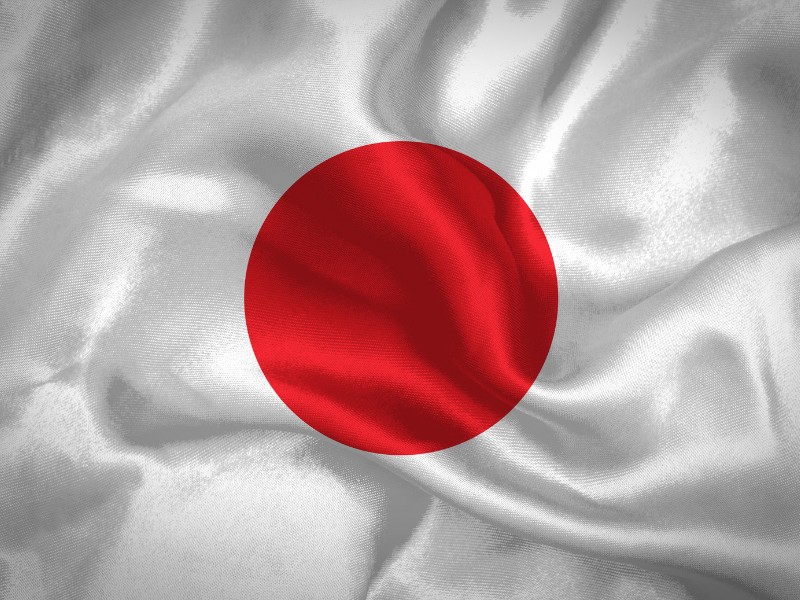
Japan Housing Bubble Crisis: Lessons Learned
The “Lost Decade” in Japan serves as a cautionary tale for economies worldwide. As the world grappled with the Global Financial Crisis of 2008, many policymakers and analysts revisited Japan’s prolonged economic stagnation to glean insights and avoid similar pitfalls. The parallels between the two events, though not identical, offer valuable lessons for the broader economic community.
Comparisons with the Global Financial Crisis of 2008
- Asset Bubbles and Bursting: Both the Japanese housing bubble of the 1990s and the U.S. housing bubble leading up to 2008 were characterized by rapid asset price inflation, driven by speculative behavior and excessive leverage. When these bubbles burst, they led to systemic financial crises, which in turn resulted in severe recessions.
- Banking Sector Vulnerabilities: Both crises showcased the vulnerabilities of the banking sector. In Japan, many banks were loaded with non-performing loans post-bubble, while in 2008, complex financial instruments like mortgage-backed securities wreaked havoc. The interconnectedness of financial institutions amplified the crises, leading to systemic risks.
- Government Responses: In both instances, governments and central banks had to intervene massively to stabilize the financial system. This included bailouts, monetary easing policies, and fiscal stimulus packages. However, the speed and scale of interventions varied. While Japan was often criticized for its delayed response, the actions post-2008, especially in the U.S., were swifter, having learned from Japan’s experience.
Implications for Economic Policymaking
- The Limits of Monetary Policy: Both Japan’s Lost Decade and the aftermath of the 2008 crisis demonstrated that while monetary easing (like reducing interest rates) can provide short-term relief, it’s not a silver bullet for recovery. Over-reliance on such policies can even lead to unintended consequences, like asset bubbles or strains on savers.
- Importance of Fiscal Stimulus: Coordinated fiscal policies, such as government spending or tax breaks, can play a crucial role in reviving demand during downturns. However, these must be carefully calibrated to ensure they lead to sustainable growth and not just short-term boosts.
- Addressing Structural Issues: Downturns can often be symptomatic of deeper structural issues within an economy. Whether it’s labor market rigidity in Japan or lax lending standards leading up to 2008, addressing these underlying issues is crucial for long-term recovery.
The Importance of Proactive Regulatory Frameworks
- Anticipating Vulnerabilities: The Japanese experience underscored the need for financial regulators to not just react to crises, but to anticipate vulnerabilities and act preemptively. This means continuously monitoring asset prices, lending behaviors, and the health of financial institutions.
- Global Coordination: The 2008 crisis highlighted the globalized nature of finance. A crisis in one country can quickly spill over to others. As such, there’s a need for international coordination in regulatory practices to ensure stability across borders.
- Avoiding Complacency: A booming economy can often lead to complacency among regulators and policymakers. Japan’s Lost Decade is a reminder that periods of rapid growth, if not underpinned by strong fundamentals, can lead to devastating downturns.
- Importance of “Stress Tests”: Post-2008, many financial regulators worldwide introduced “stress tests” for banks to ensure they could withstand economic shocks. This practice aims to prevent the kind of widespread banking crises seen in Japan in the 1990s.
In conclusion, while the specific circumstances and triggers of Japan’s Lost Decade and the 2008 Global Financial Crisis differed, the overarching themes of speculative behavior, financial sector vulnerabilities, and the challenges of crisis management were consistent. By studying these events, policymakers can better equip themselves to navigate future economic challenges and ensure the stability and prosperity of their economies.
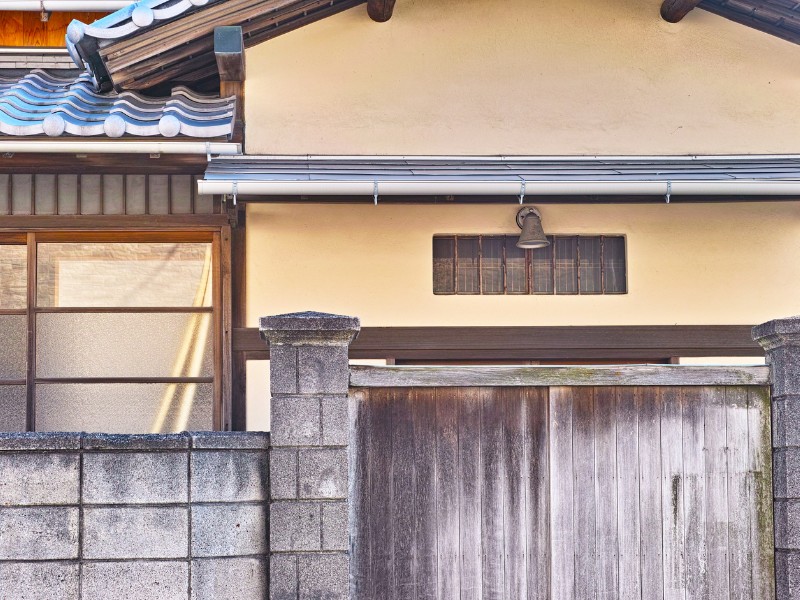
Recovery and the Path Forward In Japan
Japan’s “Lost Decade” might be more appropriately termed the “Lost Two Decades,” as the country grappled with economic stagnation and deflation well into the 21st century. However, the story does not end in pessimism. Through concerted efforts, policy shifts, and societal resilience, Japan has embarked on a path of recovery, forging a new economic narrative while addressing both legacy challenges and emerging ones.
Japan’s Slow Climb Out of Economic Stagnation
- Monetary Policy Innovations: The Bank of Japan adopted unconventional monetary policies to combat persistent deflation, such as negative interest rates and quantitative easing. These measures aimed to stimulate lending, investment, and consumption.
- Structural Reforms: Understanding that temporary measures would not suffice, successive Japanese governments launched structural reforms targeting sectors ranging from agriculture to healthcare. The goal was to increase competitiveness, productivity, and innovation.
- Corporate Governance: Japan began addressing issues in corporate governance to make its companies more transparent, accountable, and thereby, attractive for both domestic and foreign investors. These reforms aimed to boost both corporate performance and investor confidence.
Modern Economic Landscape and Challenges
- Demographic Dilemma: One of Japan’s most pressing challenges is its aging population and low birthrate. This demographic shift has implications for labor markets, social security systems, and economic growth potential. Addressing this requires a multifaceted approach, including promoting female workforce participation, considering immigration policies, and leveraging automation and robotics.
- Technological Leadership: Japan, once a global leader in technology and innovation, has faced competition from countries like South Korea, China, and the U.S. Renewed focus on research & development, fostering start-up ecosystems, and emphasizing sectors like AI, robotics, and green technology is essential for Japan to reclaim its leading position.
- Trade and Globalization: In the face of rising global protectionism, Japan has actively pursued multilateral trade agreements, such as the Comprehensive and Progressive Agreement for Trans-Pacific Partnership (CPTPP) and the EU-Japan Economic Partnership Agreement, to ensure market access and strengthen economic ties.
Renewed Optimism and the Promise of a Reinvigorated Japan
- Tourism and Soft Power: Japan has experienced a surge in tourism over recent years. Leveraging its rich cultural heritage, from anime to traditional arts, Japan has successfully positioned itself as a top global destination. This not only boosts the economy but also strengthens its soft power on the global stage.
- Sustainable Future: Japan is increasingly focusing on sustainability and green technology, eyeing leadership in sectors like electric vehicles, battery technology, and renewable energy. Initiatives like the “Society 5.0” vision lay out a roadmap for an integrated, sustainable, and technologically advanced society.
- Resilience and Adaptability: If there’s one trait that characterizes Japan through its history, it’s resilience. From rebuilding post-WWII to navigating economic crises, Japan has consistently demonstrated the ability to adapt, innovate, and move forward.
- Forward-looking Policies: There’s a palpable sense of forward-looking optimism with policies emphasizing digital transformation, regulatory reforms to support new business models, and international collaborations in sectors like space exploration and research.
While the shadows of the “Lost Decade” loom large in Japan’s recent history, they are but a chapter in a longer narrative of resilience, innovation, and transformation. The lessons learned from past economic challenges have not only fortified Japan’s approach to current issues but have also seeded a spirit of optimism and ambition. As Japan looks to the future, it does so with a blend of reverence for its past, a pragmatic approach to present challenges, and a visionary zeal for the opportunities that lie ahead.
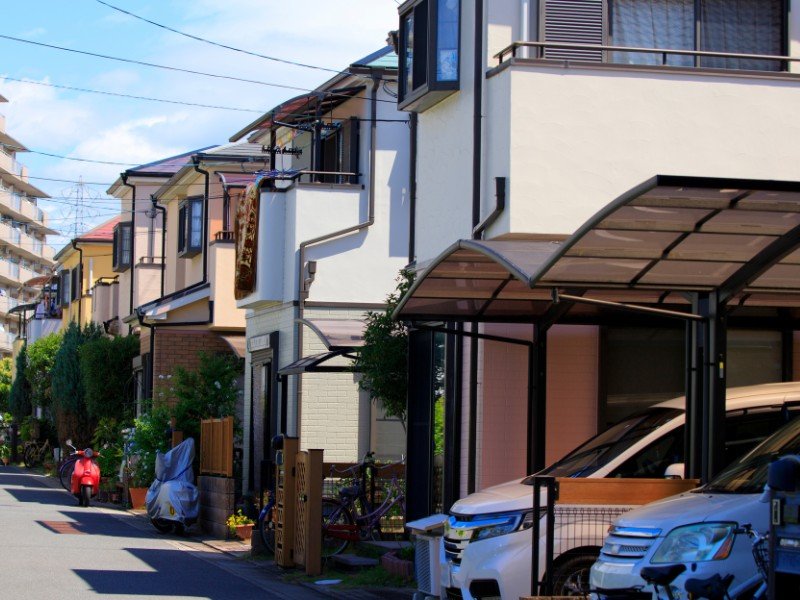
Conclusion: Japan’s Lost Decade
Japan’s “Lost Decade” is a chapter that resonates deeply in the annals of economic history, serving as a stark reminder of the delicate interplay between policy, finance, and societal expectations. As we reflect upon this tumultuous period and its prolonged aftermath, the narrative isn’t solely one of despair, but equally one of resilience, introspection, and eventual rejuvenation.
The Lasting Legacy of Japan’s Lost Decade
- Economic Paradigm Shift: The Lost Decade challenged traditional economic thinking. Previously held notions about the infallibility of robust economies were replaced by a more nuanced understanding of how external shocks, policy missteps, and societal pressures can culminate in prolonged stagnation.
- Global Cautionary Tale: Economists, policymakers, and investors around the world have studied Japan’s prolonged stagnation to identify early warning signs and implement preventive measures in their respective nations. Japan’s experience offers a framework on the consequences of unchecked asset bubbles and the perils of delayed or misaligned policy responses.
- Cultural Reawakening: On a societal level, the economic challenges prompted a deeper cultural introspection. It led to the reevaluation of work ethics, life priorities, and the very definitions of success and happiness. A society once obsessed with relentless growth began to find value in sustainability, balance, and holistic well-being.
- Institutional Resilience: One cannot overlook how Japan’s institutions, though initially overwhelmed, responded over time. The bureaucratic machinery, corporate structures, and financial systems underwent significant transformations to adapt to the new realities, showcasing an inherent strength and malleability.

How Understanding the Past Can Inform Future Decisions
- Prevention Over Cure: By recognizing the early symptoms of economic imbalances, such as speculative asset bubbles or excessive debt levels, nations can take pre-emptive measures. Japan’s experience underscores the importance of timely interventions over retroactive fixes.
- Flexibility in Policy-making: Economic challenges evolve, and so should policy responses. A rigid adherence to outdated models can exacerbate crises. Learning from Japan, it becomes evident that adaptive, forward-thinking strategies, open to global insights and innovative approaches, are crucial.
- Societal Balance: An economy is as much about numbers as it is about people. A holistic economic model that factors in societal well-being, mental health, work-life balance, and cultural preservation is more sustainable in the long run. Japan’s shift from relentless work hours to a more balanced approach is a testament to this realization.
- Global Interconnectedness: In our globalized era, no nation’s economy operates in isolation. Japan’s experience has emphasized the importance of international cooperation, be it in terms of trade, financial regulations, or shared technological endeavors.
- Historical Perspective: Lastly, history has a tendency to repeat itself, albeit in different forms. By studying and understanding the depths of Japan’s Lost Decade, future generations of policymakers, economists, and business leaders are better equipped to navigate complex economic landscapes, making informed decisions that factor in both immediate challenges and long-term implications.
In wrapping up our exploration of Japan’s Lost Decade, it’s vital to appreciate the broader lessons it offers. Beyond the economic theories, statistics, and policy debates, it stands as a testament to the indomitable human spirit – the capacity to learn from adversity, adapt, innovate, and carve out pathways to renewal. As we move forward into an increasingly complex global economy, the reflections and lessons from Japan’s past become not just historical anecdotes but guiding beacons for a sustainable, balanced, and inclusive future.
Important Information
Investment Disclaimer: The content provided here is for informational purposes only and does not constitute financial, investment, tax or professional advice. Investments carry risks and are not guaranteed; errors in data may occur. Past performance, including backtest results, does not guarantee future outcomes. Please note that indexes are benchmarks and not directly investable. All examples are purely hypothetical. Do your own due diligence. You should conduct your own research and consult a professional advisor before making investment decisions.
“Picture Perfect Portfolios” does not endorse or guarantee the accuracy of the information in this post and is not responsible for any financial losses or damages incurred from relying on this information. Investing involves the risk of loss and is not suitable for all investors. When it comes to capital efficiency, using leverage (or leveraged products) in investing amplifies both potential gains and losses, making it possible to lose more than your initial investment. It involves higher risk and costs, including possible margin calls and interest expenses, which can adversely affect your financial condition. The views and opinions expressed in this post are solely those of the author and do not necessarily reflect the official policy or position of anyone else. You can read my complete disclaimer here.





